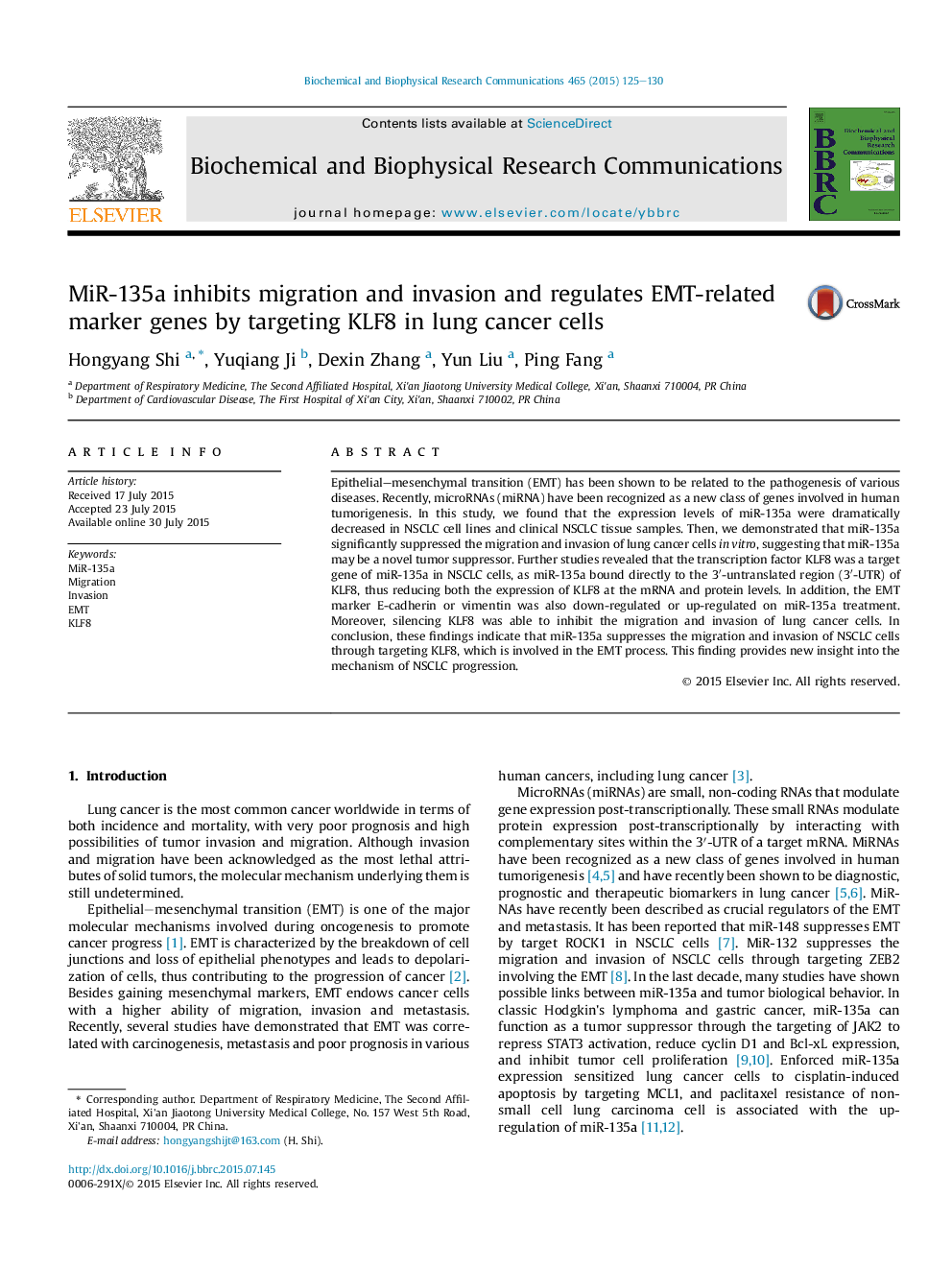| Article ID | Journal | Published Year | Pages | File Type |
|---|---|---|---|---|
| 1928129 | Biochemical and Biophysical Research Communications | 2015 | 6 Pages |
•MiR-135a regulated key EMT markers.•MiR-135a inhibits the migration and invasion of NSCLC cells.•MiR-135a targets KLF8 and decreases its expression in NSCLC cells.•KLF8 is involved in miR-135a-regulated migration and invasion of NSCLC cells.•KLF8 is involved in TGF-β1-induced EMT in A549 cells.
Epithelial–mesenchymal transition (EMT) has been shown to be related to the pathogenesis of various diseases. Recently, microRNAs (miRNA) have been recognized as a new class of genes involved in human tumorigenesis. In this study, we found that the expression levels of miR-135a were dramatically decreased in NSCLC cell lines and clinical NSCLC tissue samples. Then, we demonstrated that miR-135a significantly suppressed the migration and invasion of lung cancer cells in vitro, suggesting that miR-135a may be a novel tumor suppressor. Further studies revealed that the transcription factor KLF8 was a target gene of miR-135a in NSCLC cells, as miR-135a bound directly to the 3′-untranslated region (3′-UTR) of KLF8, thus reducing both the expression of KLF8 at the mRNA and protein levels. In addition, the EMT marker E-cadherin or vimentin was also down-regulated or up-regulated on miR-135a treatment. Moreover, silencing KLF8 was able to inhibit the migration and invasion of lung cancer cells. In conclusion, these findings indicate that miR-135a suppresses the migration and invasion of NSCLC cells through targeting KLF8, which is involved in the EMT process. This finding provides new insight into the mechanism of NSCLC progression.
